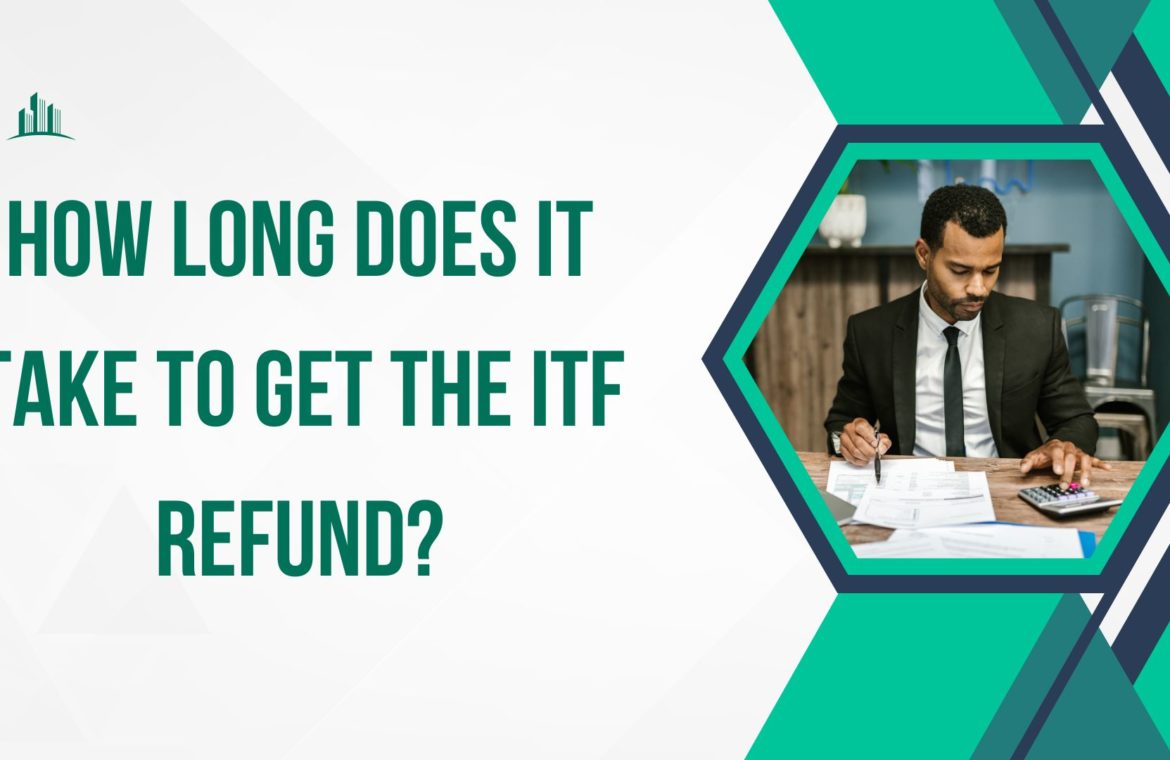The process of obtaining an Income Tax Refund (ITF) typically involves several steps and can vary in duration depending on various factors. Generally, once a taxpayer files their income tax return and claims a refund, the processing time can range from a few weeks to a few months. The speed of the refund depends on the accuracy of the return, the method of filing, and the efficiency of the tax department’s processing system. For those who file electronically and have a direct deposit option, the refund may be processed more quickly compared to paper filings.

Overview of the Income Tax Refund Process
The Income Tax Refund (ITF) process involves multiple steps, with the duration varying based on factors like accuracy and the chosen filing method. The process begins when a taxpayer submits their income tax return, including a claim for a refund. The tax authorities then review the return to verify its accuracy and confirm the taxpayer’s eligibility for a refund. If the information is accurate and complete, the refund is approved, and the taxpayer is notified.
The time it takes to receive the refund can range from a few weeks to several months. Returns filed electronically, particularly those with direct deposit details, are usually processed faster than paper submissions, which require more time due to manual processing. Overall, the ITF process is structured to ensure that taxpayers receive their refunds as quickly as possible while upholding the accuracy and integrity of the tax system.
Factors Affecting ITF Processing Time
- Accuracy of the Tax Return: Errors or discrepancies in the tax return can lead to delays as tax authorities may require additional information or corrections.
- Filing Method: Electronic filings are generally processed faster due to automation, while paper submissions take longer due to manual processing.
- Refund Method: Choosing direct deposit into a bank account typically results in a quicker refund compared to receiving a check by mail.
- Timing of Filing: The time of year when the return is filed can impact processing speed. Filing during peak tax season may result in longer processing times due to a higher volume of submissions.
- Additional Scrutiny: Returns that are complex or involve high-value refunds may trigger extra scrutiny or audits by the tax department, extending the overall processing timeline.
Electronic Filing vs. Paper Filing Income tax returns
| Aspect | Electronic Filing | Paper Filing |
|---|---|---|
| Processing Speed | Generally faster due to automated processing. | Slower due to manual handling and processing. |
| Error Reduction | Lower chance of errors, as automated systems catch mistakes early. | Higher likelihood of errors and delays due to manual entry. |
| Refund Speed | Quicker refund, especially with direct deposit. | Slower refund, particularly if a physical check is requested. |
| Convenience | More convenient and efficient for taxpayers. | Requires more effort to prepare and submit forms. |
| Preferred by | Most taxpayers due to speed, convenience, and reliability. | Those preferring a traditional, hands-on approach. |
| Additional Verification | Less likely to require additional verification. | More prone to delays due to the need for additional checks. |
Common Delays in Receiving an Income Tax Refund (ITF)
- Inaccuracies in the Tax Return: Errors such as incorrect information or calculation mistakes can lead to delays as tax authorities may need to verify and correct these issues.
- Paper Filing: Returns filed on paper are processed more slowly due to manual handling, leading to longer wait times compared to electronic submissions.
- Incomplete Documentation: Missing forms or documentation can cause delays as the tax department may request additional information, slowing down the refund process.
- Refund Method: Opting for a refund by check instead of direct deposit can extend the waiting period, as checks take longer to be issued and delivered.
- Seasonal Factors: Filing during peak tax season can result in slower processing times due to a higher volume of submissions and increased workload for tax authorities.
- Complex Returns: Returns that are complex or involve high-value refunds may undergo additional scrutiny or audits, further delaying the refund.
How to Track Income Tax Refund Status?
To effectively monitor the status of Income Tax Refund (ITF), follow these steps:
STEP 1: Online Portal: Access the official tax authority’s website and use their online portal or refund status tool. You’ll need to input your Permanent Account Number (PAN) and the relevant assessment year to check your refund status.
STEP 2: Mobile Apps: Download and use the tax department’s mobile app, if available. After logging in, navigate to the refund status section to view updates.
STEP 3: Customer Service: Reach out to the tax department’s customer service or helpline for assistance. Be prepared to provide your return details to get accurate information.
STEP 4: Email Alerts: Check your registered email for notifications from the tax authorities, as some may send updates about your refund status directly to your inbox.
Tips for Accelerating Income Tax Refund (ITF)
To speed up your Income Tax Refund (ITF), follow these strategies:
- File Electronically: Choose electronic filing instead of paper submissions. E-filing is usually quicker and minimizes the risk of errors, resulting in faster refund processing.
- Verify Accuracy: Carefully review your tax return for errors or missing information before submission. Accurate returns are less likely to face delays from corrections or additional verification.
- Opt for Direct Deposit: Select direct deposit for your refund, as it is faster than receiving a physical check and avoids delays associated with postal mail.
- Include All Required Documents: Ensure that all necessary documents and forms are submitted with your return. Missing documentation can lead to delays as the tax department may need to request additional information.
- File Early: Submit your tax return as soon as possible. Early filing helps you avoid the peak season rush, which can expedite your refund.
What to Do if Refund is Delayed?
- Check Refund Status: Start by checking your refund status on the tax authority’s online portal or mobile app. Ensure that you enter all required details, such as your Permanent Account Number (PAN), correctly.
- Review Your Return: Carefully review your tax return for any errors or missing information that could be causing the delay. Address and correct any discrepancies if necessary.
- Contact Customer Service: Reach out to the tax department’s customer service or helpline for assistance. Provide your return details and any relevant information to get an update on your refund status.
- Monitor Notifications: Check both your email and postal mail for any communications from the tax authorities about your refund status or requests for additional documentation.
- Be Patient: Delays may happen due to high submission volumes or extra scrutiny. Allow some time for the process, but continue to monitor and follow up as needed.
Conclusion
In conclusion, the Income Tax Refund (ITF) process is a critical aspect of tax administration that ensures taxpayers receive any excess payments promptly. While the time frame for receiving a refund can vary based on factors like filing method, accuracy, and documentation, understanding these elements can help streamline the process. Electronic filing, accuracy in the return, and direct deposit are key factors in expediting refunds. In case of delays, checking the refund status, reviewing the return, and contacting customer service can provide clarity. Overall, staying informed and proactive can help manage and accelerate the refund process efficiently.
Frequently Asked Questions (FAQs)
1. How long does it take to receive an Income Tax Refund?
The time to receive an ITF varies depending on factors such as the filing method, accuracy of the return, and the method of refund delivery. Generally, electronic filings with direct deposit are processed faster, often within a few weeks, while paper filings or checks may take several months.
2. What should I do if my Income Tax Refund is delayed?
If your refund is delayed, first check the status through the tax authority’s online portal or mobile app. Review your tax return for errors, contact customer service for updates. Also monitor your email and mail for any communication from the tax authorities.
3. Can I expedite my Income Tax Refund?
Yes, you can expedite your refund by filing electronically, ensuring accuracy in your return, choosing direct deposit, and submitting all required documents. Filing early can also help avoid delays during peak tax season.
Read More:
- Mutual Funds and Taxes: How Income Tax Slabs Affect Your Returns
- What are tax-free annuity exchanges?
- 13 tax-free incomes in India – every investor should know
- Tax Return Tips for Last-Minute Filers

Hello, I am Tanisha Kriplani, graduated in computer science from Delhi University. I am passionate about web content writing and have a strong interest in Data Analytics and Data Engineering.












